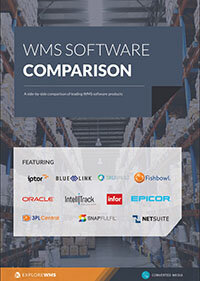Five key stakeholders in your WMS selection process
Purchasing a warehouse management system is a significant investment for any business. The WMS will have a long life, guide your future technology purchases, and can even impact the hiring at your business. Picking the best WMS depends on getting approval and help from WMS stakeholders throughout your organization. Here are five of the most important people you must include to make the right choice.
GET WMS RESEARCH & KNOWLEDGE RIGHT TO YOUR INBOX
Covering the key issues faced by businesses selecting and implementing WMS.
1. Executive leadership
Sometimes the hardest WMS stakeholder buy-in to get is with your executive leadership. The C-suite of most companies tends to live and breathe on the balance sheet. Getting them on board is vital to getting the funding you need for your WMS selection, so you’ll want to present warehouse management systems that have a proven track record of delivering a return on investment.
Guide: Don't miss a step with our WMS selection checklist
2. IT leaders
The biggest headache of a new WMS typically is getting it to place nice with all of your other systems. IT leadership looks at the built-in interoperability for each platform, and they’ll also want to know core technical elements such as coding languages, import/export functionality, the availability of APIs, and what devices the WMS will operate on – because IT needs to secure those devices.
Work with your IT leadership to make sure you’re narrowing your WMS selection down to platforms that will support your needs. Also, circle back with IT after you meet with the rest of the leaders below. You’ll need the tech team’s help to ensure you can collect and properly use all the data and systems that other WMS stakeholders need.
3. Warehouse managers
Don’t worry; this list isn’t by order of importance. Most of the people taking a look at this are warehouse managers and IT leaders who also spend time on the floor. The reason you need your warehouse leadership in on the conversation is pretty obvious, but make sure you take specific time to think of their needs.
Lots of WMS projects just assume the warehouse needs without fleshing them out, so you might skip certain device support, custom picking options, or looking for a platform that’s flexible enough to support multiple entrance points. Write down all of the data points that your warehouse teams use today and ensure that this data is not only collected by the WMS but can be analyzed and have automatically generated reports.
4. Sales managers
What’s the most important thing to a sales team’s success? Something to sell.
Sales managers and their respective teams should be in your list of WMS stakeholders when you’re looking to adopt a WMS because the platform needs to be robust enough to give these teams the data they need to make a sale. Work with your sales group to determine what this information is and how best it should be shared. This might include looking for a WMS selection that incorporates with ERP and other SaaS platforms.
5. Supply chain partners
Your existing supply chain partners can impact your WMS selection because you’ll run a more efficient operation if their management systems can hand off data to yours. Look at the sales, supply, and distribution software that your potential WMS choices integrates with and compare that list against the software your partners use. The easier it is to incorporate their data into your WMS, the easier it is to verify shipments, check audits, and monitor the status of your inventory.
Free white paper

WMS selection checklist
Over 100 actionable steps to WMS selection success

Featured white papers
Related articles
-

How much WMS software costs and how to set your budget
A complete guide to WMS costs, and how to calculate your budget based on these
-

Mission-critical features of food lot traceability software
What features of food traceability software will help you during a food recall
-

Warehouse picking and packing processes: how much labor do you need?
Logiwa's Erhan Musaoglu shows you how to calculate picking and packing labor requirements for you...



